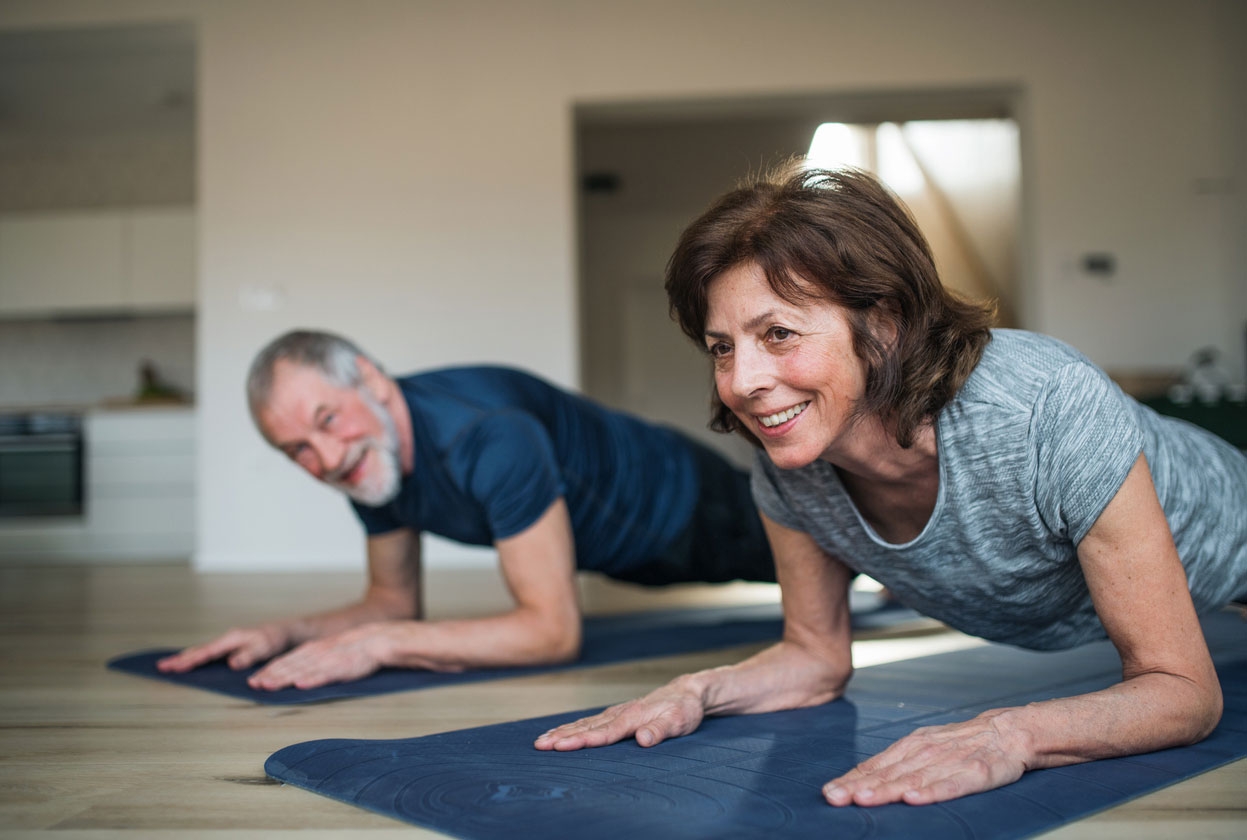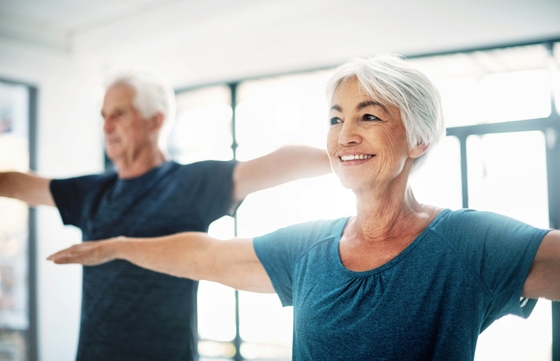
Physical activity after a heart attack
Discover what you need to know about being active after a heart attack.
Key takeaways
2 min read
Keeping physically active is an important part of looking after your heart.
Before you start being active, speak to your doctor, nurse, health worker or cardiac rehabilitation team for advice on starting suitable activities again.
It’s important to follow your doctor’s advice and slowly build up your activity.
Never hold your breath when lifting weights.
After a heart attack, it’s normal to worry about what exercise you can and can’t do. Keeping physically active is important for your heart and overall health. It will speed up your ability to return to normal activities, reduce your chances of having another heart attack and help you feel healthier and have more energy.
A great place to start physical activity after a heart attack is in a cardiac rehabilitation (cardiac rehab) program. Cardiac rehab often involves physical activity and the prescription of safe, personalised exercises to improve heart health. Before becoming active, speak to your doctor, nurse, health worker or cardiac rehabilitation team. You’ll need advice on starting activities again and pacing yourself.
What can you do straight after a heart attack?
You can often return to your usual activities within a few weeks of having a heart attack. This depends on your health and level of activity before your heart attack, and how much damage was caused by your heart attack. Your doctor will discuss what activities you can do at home before you leave hospital.
Some people need support to return to independent living. You might need care within your home, to help with meals, cleaning and showering, shopping, transport and home maintenance. Talk to your doctor or social worker to find out what help is available.
It’s important to follow your doctor’s advice and slowly build up your activity. A great way to start is by doing light, everyday activities, such as cooking and walking about the house.
Avoid doing heavier housework, such as sweeping, vacuuming, or mowing the lawn until your doctor says it’s ok to do so.
You can build up by gradually adding other activities as you feel able. Make sure you’re free from pain or discomfort as you add new activities. You should aim to sit less each day.
Once you’re managing daily activities, going to cardiac rehab is a great way to get your fitness back on track.
Top tips for physical activity
Talk to your doctor, nurse, health worker or cardiac rehabilitation team member to make sure your exercise is safe and suitable.
Stop and rest if an activity causes you pain, or if you get very tired, dizzy or short of breath.
Carry your mobile phone with you, in case you feel unwell and need to call for help.
If you have been prescribed angina medicine, keep it with you during exercise.
Don’t do exercise straight after eating or after drinking alcohol.
Drink water before and after exercise (to replace water lost as sweat).
What about walking?
Did you know walking is a great way to exercise? Walking is suitable for people of all ages and fitness levels. It can be done just about anywhere and better still, it’s free!
The Heart Foundation encourages Australians to doing regular physical activity as it’s an important part of improving your heart health. Walking regularly is a great option and has many health benefits beyond your heart.
Walking has been proven to:
Help manage weight, blood pressure and cholesterol
Reduce your risk of developing some cancers
Maintain your bone density, reducing your risk of osteoporosis and fractures
Improve balance and coordination, reducing your risk of falls and injuries.
Top tips for walking
Start slowly and don’t push yourself too hard. After a heart attack, you can start with walking 5-10 minutes a day and build up slowly to 30 minutes over several weeks.
Begin with easy walking around your house or on your street. Make sure the ground is flat. Walk at a comfortable pace. You should be able to talk without feeling short of breath. If you don’t feel well enough to walk one day, let your body rest. It is ok to miss walking that day.
Begin with a goal, such as walking to the local shop or around the block. As you start to feel better and fitter, increase the intensity so you start to ‘puff’ a little. Remember to warm up and cool down for the first and last 5 minutes of your session. Warming up is important to stop you from getting injured. Cooling down reduces your heart rate slowly.
Heart Foundation Walking is a free walking network that makes physical activity fun, social and easy.
Find your nearest Walking Group
Can you take the stairs?
If there are stairs where you live, you can climb them slowly when you get home from hospital.
Be aware that walking up the stairs takes more energy, so take your time and rest if you need to. Gradually increase the number of stairs you climb and how quickly you climb them.
What about playing sports?
It’s important to participate in activities and sports that you enjoy. As your fitness and confidence increases, you should be able to begin activities like dancing, bike riding, swimming, golf and bowls again.
Always ask your doctor, nurse, health worker or cardiac rehabilitation team about playing specific sports or other physical activities. Your doctor might recommend that you stay away from some competitive sports.
What about lifting weights and resistance training?
Lifting weights and resistance training improves your muscle mass and strength. Always speak to your doctor, nurse, health worker or cardiac rehabilitation team before starting any muscle strengthening exercises. They will give you advice about what weight is suitable and safe for you to lift.
You can improve your strength at home by lifting light weights, such as cans of tinned food or bags of rice. You can also lift your body weight by doing exercises such as lunges, squats or push-ups. As with any activity, start slowly and build up gradually.
As a guide, start with 10 repetitions of a light weight that you can lift easily. You can increase this gradually over time until you reach 20 repetitions.
You should breathe normally when lifting weights or doing other lifting activities, such as carrying heavy shopping or a basket of wet laundry. Never hold your breath when you’re lifting weights, even light ones. The strain of lifting weights can raise your blood pressure.
You might also be interested in...

Physical activity and your heart health
Physical activity and exercise can benefit your heart, body and mind.

Types of physical activity
Nine out of 10 Australians could reduce the risk of heart disease by walking as little as 15 minutes more each day.

Benefits of physical activity for your heart
Physical activity and exercise can do wonders for your physical and mental health.
Last updated14 October 2025
Last reviewed26 February 2024
